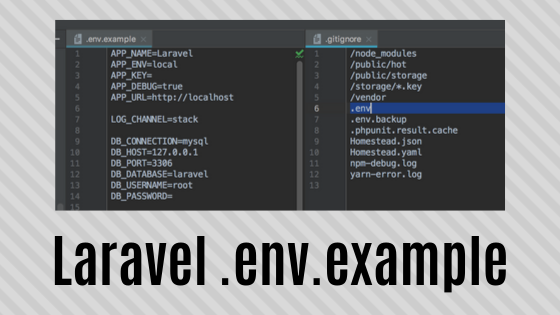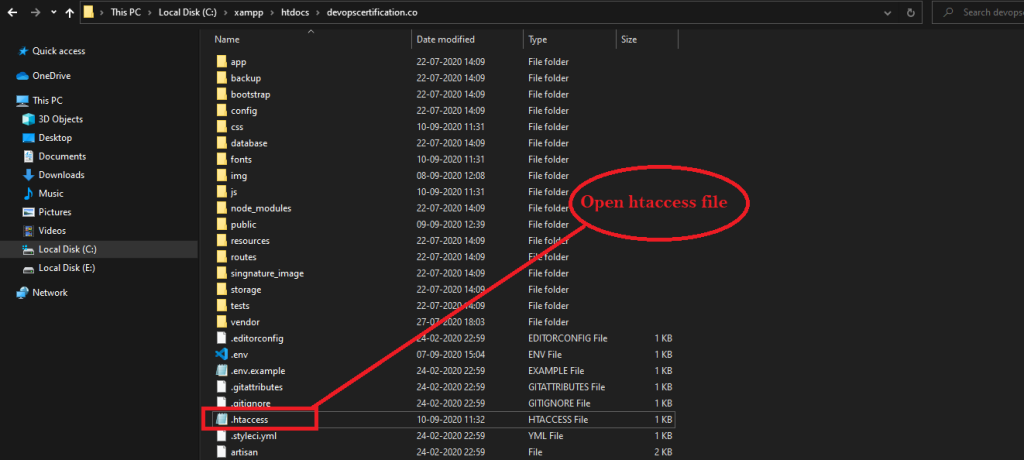Laravel’s default .env file contains some common configuration values that may differ based on whether your application is running locally or on a production web server. These values are then retrieved from various Laravel configuration files within the config directory using Laravel’s env function.

By default, the .env file includes following parameters
APP_ENV = local
APP_DEBUG = true
APP_KEY = base64:ZPt2wmKE/X4eEhrzJU6XX4R93rCwYG8E2f8QUA7kGK8 =
APP_URL = http://localhost
DB_CONNECTION = mysql
DB_HOST = 127.0.0.1
DB_PORT = 3306
DB_DATABASE = homestead
DB_USERNAME = homestead
DB_PASSWORD = secret
CACHE_DRIVER = file
SESSION_DRIVER = file
QUEUE_DRIVER = sync
REDIS_HOST = 127.0.0.1
REDIS_PASSWORD = null
REDIS_PORT = 6379
MAIL_DRIVER = smtp
MAIL_HOST = mailtrap.ioMAIL_PORT = 2525
MAIL_USERNAME = null
MAIL_PASSWORD = null
MAIL_ENCRYPTION = nullnote:
- The .env file should not be committed to the application source control, since each developer or user has some predefined environment configuration for the web application.
- For backup options, the development team should include the .env.example file, which should contain the default configuration.
Where is the .env file located

Starting from v1.28 , the .env file is placed at the base of the project directory. Project directory can be explicitly defined with the –file option or COMPOSE_FILE environment variable. Otherwise, it is the current working directory where the docker compose command is executed ( v1.28 )





